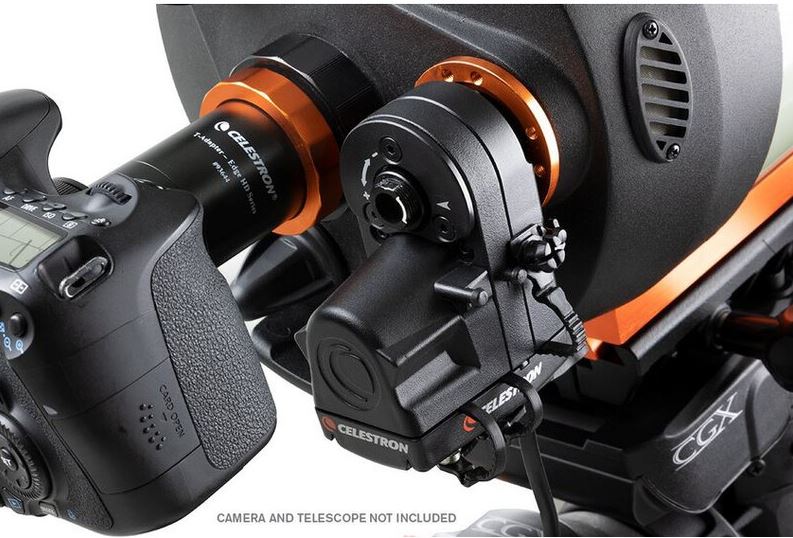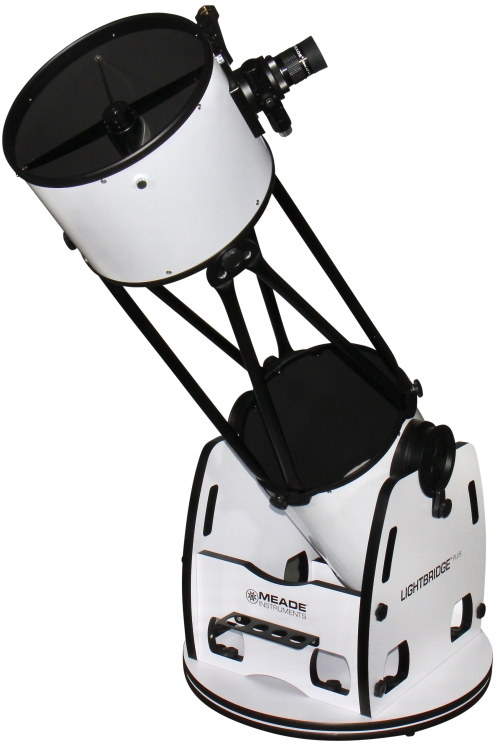When it comes to astrophotography, the right focus is the most important thing. Even the best optics only deliver sharp images if the focus is spot on. A motorized focus has two advantages over manual focusing: it is vibration-free and very precise. If you remotely control your telescope via your PC, you definitely need motorization.
For the very popular SC telescopes of the Celestron brand, numerous solutions from different suppliers have been available. Celestron now offers its own model, the focus motor for SC and EdgeHD optics.
The motor fits all SC, EdgeHD and RASA optics, as well as the two new Maksutovs with CGEM-II and CGX mounts. Exceptions are optics built before 2006 and the 9.25″ EdgeHD. An additional adapter is required for the RASA 1100, as the RASA 1100 is already supplied with a FeatherTouch micro-focus. The adapter requires you to dismantle the focuser partially to fit the motor.
If you are using a Celestron mount, power is simply supplied via the mount’s AUX port. A cable for this is included in the scope of delivery. If all AUX ports on your mount are already occupied, simply use the Celestron Aux Port Splitter.
The motor can be controlled in three ways:
- With the NexStar+ controller: Simply press the MENU button, select Focuser and you can use the two arrow keys to control the motor and adjust its speed. Version 5.30+ of the installed firmware is required. You can update your Nexstar control via the Internet at any time. The controller is not only suitable for visual observation, but also for astrophotography with a DSLR, i.e. without a laptop.
- With a laptop or PC: If you operate your telescope remotely or have connected an astrophotography camera, it is best to use the free program Celestron Focuser Utility for Windows. For this purpose, you need to connect the NexStar hand controller to the computer via USB, not the focus motor itself. The new CGX and CGX-L mounts can be controlled with the Celestron PWI software. The focuser can also be addressed via this program. The CGX and CGX-L mounts can be connected directly to the laptop or PC via USB without manual control.
- Without a Celestron mount: If you have a Celestron optic mounted on another brand’s mount, you can control the focus motor via the USB port. The USB port should supply 900mA. As an alternative to the USB power supply, you can also operate the focus motor via main power or a Powertank. However, a power supply unit or power cable is not included in the scope of delivery.
The Celestron focus motor for SC and EdgeHD optics is a really useful accessory that is easy to adapt and operate.



